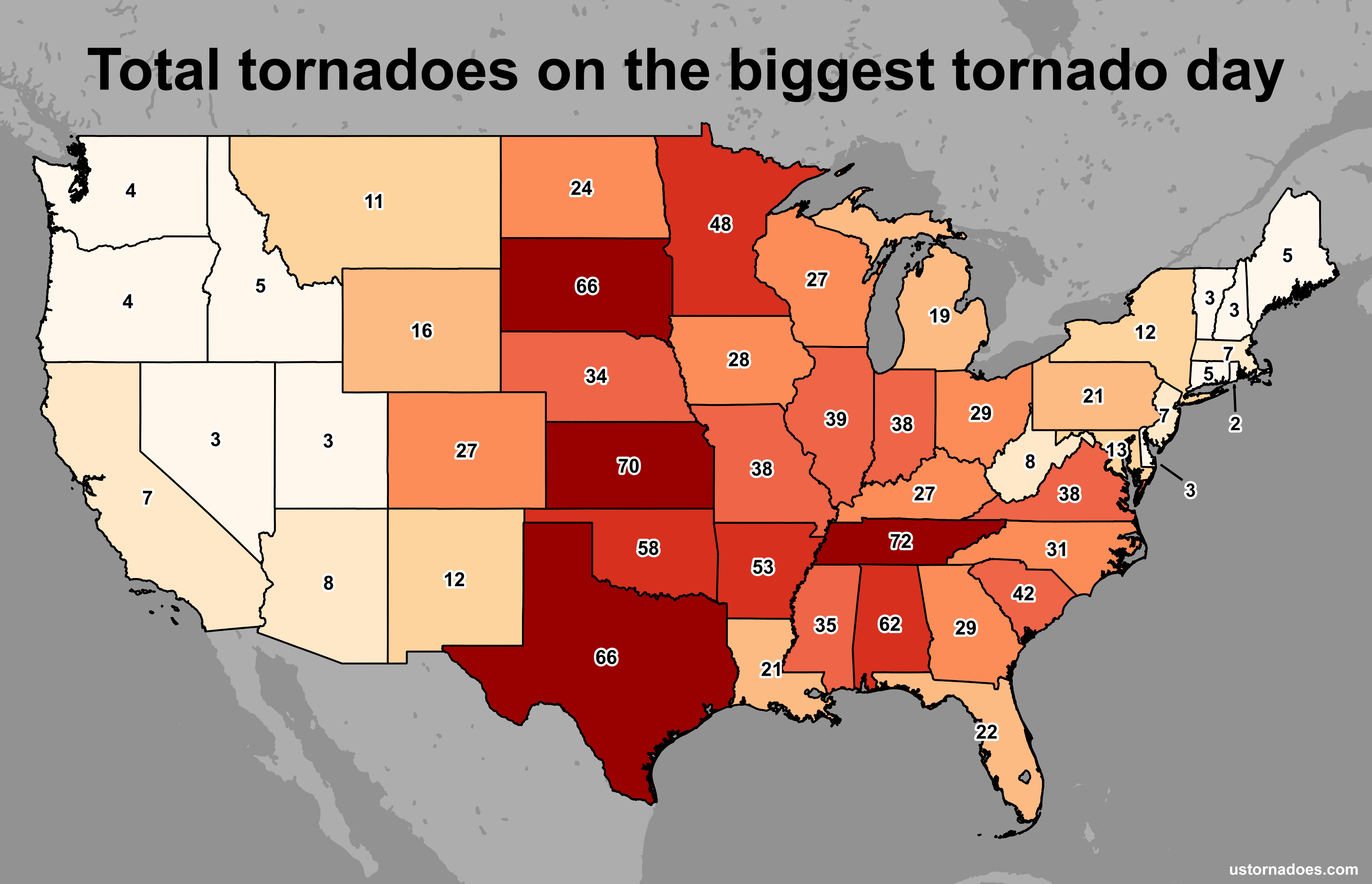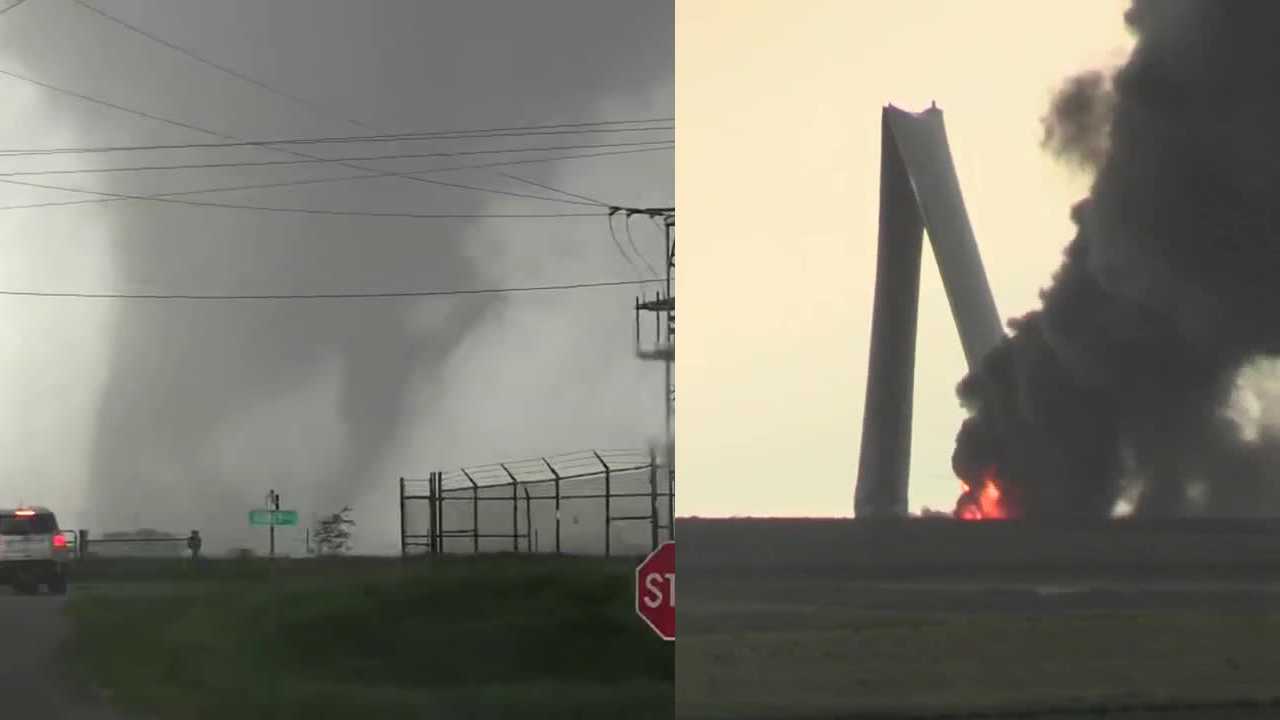Tornado Warnings and Watches
Tornado in iowa today – A tornado watch means that conditions are favorable for tornadoes to develop. A tornado warning, on the other hand, means that a tornado has been spotted or indicated by radar. If a tornado warning is issued for your area, you should take shelter immediately.
The tornado that touched down in Iowa today has left a trail of destruction in its wake. The storm tore through the town of Greenfield, causing widespread damage. A Greenfield Iowa map shows the extent of the damage, with many homes and businesses destroyed.
The tornado continued on its path, leaving a path of destruction in its wake. It is a reminder of the power of nature and the importance of being prepared for severe weather.
Here are some safety tips for staying safe during a tornado:
Seek Shelter
- Go to a basement or storm cellar.
- If there is no basement or storm cellar, go to the lowest level of your home and find a room without windows.
- Get under a sturdy table or desk and cover your head with a blanket or pillow.
Stay Away from Windows
Windows can be shattered by flying debris, so it is important to stay away from them during a tornado.
The tornadoes that have touched down in Iowa today have caused widespread damage and left many people without power. The National Weather Service has issued a tornado warning for several counties in central Iowa, and residents are urged to take shelter immediately.
The tornadoes are expected to continue for several hours, and the NWS is urging people to stay indoors and away from windows.
Be Aware of Your Surroundings
If you are outside during a tornado, be aware of your surroundings and look for shelter immediately. If you are in a car, pull over and get out of the car. Lie down in a ditch or other low-lying area and cover your head with your hands.
Tornadoes have ravaged Iowa today, leaving a trail of destruction in their wake. The small town of Greenfield has been particularly hard-hit, with many homes and businesses damaged or destroyed. For a detailed view of the affected areas, please refer to the Greenfield IA map . As the storm continues to move through the state, residents are urged to stay informed and take necessary precautions to stay safe.
Tornado History in Iowa

Iowa has a long and well-documented history of tornadoes. The state’s first recorded tornado occurred in 1844, and since then, more than 1,000 tornadoes have been reported. Iowa is located in the center of Tornado Alley, a region of the United States that experiences a high frequency of tornadoes. The state’s geography, with its flat terrain and abundant moisture, creates ideal conditions for tornado formation.
Notable Tornado Events
Some of the most notable tornadoes in Iowa history include:
- The 1973 Super Outbreak: This outbreak produced 148 tornadoes in 13 states, including 25 in Iowa. The tornadoes caused widespread damage and killed 6 people in Iowa.
- The 1984 Barneveld Tornado: This F5 tornado killed 8 people and injured 50 in Iowa. The tornado was on the ground for 30 miles and caused extensive damage to the town of Barneveld.
- The 2008 Parkersburg Tornado: This F5 tornado killed 6 people and injured 58 in Iowa. The tornado was on the ground for 22 miles and caused extensive damage to the town of Parkersburg.
Tornado Frequency and Severity, Tornado in iowa today
Tornadoes can occur anywhere in Iowa, but they are most common in the central and western parts of the state. The frequency of tornadoes varies from year to year, but the state averages about 50 tornadoes per year. The majority of tornadoes in Iowa are weak, but strong tornadoes do occur. In fact, Iowa has had more F5 tornadoes than any other state in the United States.
Factors Contributing to Tornado Formation in Iowa
There are a number of factors that contribute to tornado formation in Iowa. These factors include:
- Iowa’s location in the center of Tornado Alley
- The state’s flat terrain
- The abundance of moisture in the state
- The strong winds that often blow across the state
These factors combine to create an environment that is conducive to tornado formation.
Tornado Preparedness: Tornado In Iowa Today

Tornadoes are powerful and destructive storms that can strike quickly and with little warning. Being prepared for a tornado can help you stay safe and reduce the risk of injury or damage.
Today’s tornado outbreak in Iowa has left a trail of destruction in its wake. For the latest updates on the situation, check out the iowa tornado map . The map provides real-time information on the location and severity of tornadoes, as well as evacuation routes and shelter locations.
As the storm continues to rage, it’s crucial to stay informed and take precautions to ensure your safety.
Here are some tips for tornado preparedness:
Create an Emergency Preparedness Kit
An emergency preparedness kit should include items that will help you survive for at least three days without power or water. Some essential items to include in your kit are:
- Water (one gallon per person per day)
- Non-perishable food
- First-aid kit
- Battery-powered radio
- Flashlight and extra batteries
- Whistle
- Dust mask
- Plastic sheeting
- Duct tape
- Multi-tool
- Important documents (passports, insurance cards, etc.)
Design a Plan for Sheltering in Place
If you are caught outside during a tornado, the best thing to do is to find a sturdy building and take shelter inside. If you are in a car, get out and find a ditch or low-lying area to lie down in. Once you have found shelter, stay there until the storm has passed.
Organize a Community Tornado Drill
Organizing a community tornado drill can help you and your neighbors practice your response procedures. A drill can help you identify potential hazards in your community and develop a plan for evacuating if necessary.
Tornado Damage Assessment
Tornadoes can cause various types of damage, ranging from minor to catastrophic. The intensity of the damage depends on the strength of the tornado, as well as the type of structures and terrain it encounters.
Enhanced Fujita Scale
The Enhanced Fujita Scale (EF Scale) is a measure of tornado intensity based on the damage it causes. It ranges from EF0 to EF5, with EF5 being the most intense. The scale is used to assess tornado damage and determine the severity of the event.
| EF Rating | Wind Speed (mph) | Damage Description |
|---|---|---|
| EF0 | 65-85 | Light damage to trees and structures, including broken branches, uprooted trees, and minor roof damage. |
| EF1 | 86-110 | Moderate damage to trees and structures, including significant roof damage, broken windows, and collapsed outbuildings. |
| EF2 | 111-135 | Considerable damage to trees and structures, including collapsed walls, severe roof damage, and lifted foundations. |
| EF3 | 136-165 | Severe damage to trees and structures, including complete roof loss, collapsed walls, and overturned mobile homes. |
| EF4 | 166-200 | Devastating damage to trees and structures, including complete destruction of buildings, debree scattered for miles, and uprooted trees. |
| EF5 | >200 | Catastrophic damage, including complete destruction of structures, debree carried long distances, and even vehicles thrown into the air. |
Assessing Tornado Damage
Assessing tornado damage involves examining the affected area and evaluating the extent of the damage. This includes assessing the damage to buildings, infrastructure, vegetation, and terrain. The process typically involves:
- Surveying the affected area to identify the path of the tornado.
- Documenting the damage to structures, including the type of damage, severity, and estimated repair costs.
- Assessing the damage to infrastructure, such as power lines, roads, and bridges.
- Evaluating the damage to vegetation, including the number and type of trees uprooted or damaged.
- Analyzing the terrain to determine the impact of the tornado on the landscape, such as erosion or changes in elevation.
Tornado Recovery and Assistance

Individuals and communities affected by tornadoes can access a range of resources to aid in their recovery. These resources include financial assistance, counseling, and housing support.
Government Agencies
Government agencies play a crucial role in providing aid and support to tornado victims. The Federal Emergency Management Agency (FEMA) offers financial assistance to individuals and families, as well as grants to state and local governments for disaster recovery efforts.
The Small Business Administration (SBA) provides low-interest loans to businesses affected by tornadoes. The Department of Housing and Urban Development (HUD) offers housing assistance to low-income families and individuals who have lost their homes due to tornadoes.
Non-Profit Organizations
Non-profit organizations also play a vital role in tornado recovery efforts. The American Red Cross provides food, shelter, and clothing to tornado victims. The Salvation Army offers emotional and spiritual support, as well as financial assistance.
Habitat for Humanity helps to rebuild homes for families who have lost their homes due to tornadoes.
Successful Tornado Recovery Efforts in Iowa
Iowa has a long history of successful tornado recovery efforts. In 2008, a tornado devastated the town of Parkersburg. The community came together to rebuild the town, and today Parkersburg is a thriving community once again.
In 2013, a tornado struck the town of Moore, Oklahoma. The tornado caused widespread damage, but the community was able to rebuild with the help of government agencies and non-profit organizations.
The recent tornado that touched down in Iowa today has left a trail of destruction in its wake. For more information on the tornado and its impact on the state, please visit our comprehensive resource at tornado iowa . The site provides up-to-date news, eyewitness accounts, and expert analysis on the tornado in Iowa today.